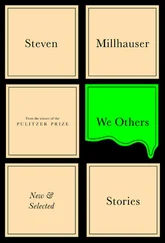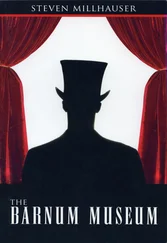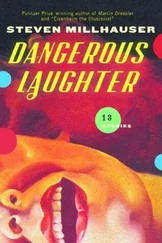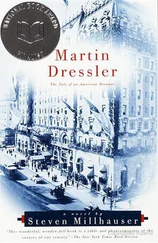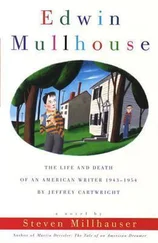On an afternoon in late June when the men had walked to Saccanaw Falls to buy a bag of nails and drink a pint of ale at the Cat and Robin, Elizabeth on her sickbed made to Sophia a remarkable proposal. Staring earnestly at Sophia, she offered to marry William if Sophia would marry Edmund. The proposal threw Sophia into confusion and turmoil, as she reports in a letter (unsent) to Fanny Cornwall. She understood immediately that the wild scheme had been hatched for the sake of Edmund: Elizabeth, whose entire life had in Sophias view been a continual sacrifice to Edmund, was willing to sacrifice herself even further for the sake of giving Edmund what he so desperately wanted: Sophia. Sophia, angry at the proposal’s secret cause, nevertheless felt it as a fearful challenge: was she willing to sacrifice her own happiness for the sake of her brother’s, and even more for the sake of Elizabeth, who would be delivered from her prison and would regain her health? The thought of moving into Stone Hill Cottage, of, as it were, replacing Elizabeth, struck her as strange and dreamlike, and not wholly unpleasing; but to marry Moorash, who made her feel “cold all over,” was out of the question. Sophia spent an anguished night and rose at dawn no longer knowing how she felt. After a dreamlike breakfast she rowed across Black Lake with William in the “fierce light” of a cloudless blue day and walked with him the two miles to Stone Hill Cottage, where William left to look for Edmund in the barn. In the dusk of Elizabeth’s curtained sickroom Sophia felt dazed; she was on the verge of saying yes, as if acceding to a terrible fatality, when Elizabeth, who was feeling better, immediately retracted her proposal of the other day, calling it “a wild idea bred of illness.” Sophia, feeling faint, sat down quickly. The entire episode goes unmentioned in Elizabeth’s Journal.
Later that month there occurred another incident that must be taken into account in any consideration of Moorash’s portrait of Sophia. She had spent the morning confined to her room in the cottage on Black Lake, unable to accompany William to Stone Hill Cottage, where he was to read to Elizabeth for an hour before returning to Sophia. In the course of the morning her mood darkened and she experienced a sharp premonition of Elizabeth’s death. William returned to find her tense and agitated; after assuring her that Elizabeth was well, he took Sophia with him on horseback to Stone Hill Cottage, where he left her to ride into town. He returned to find her lying with her eyes closed on the sofa in the kitchen, being read to by Elizabeth while Moorash paced anxiously. Elizabeth recorded the incident in her Journal: she had been asleep, and woke to find Sophia sobbing hysterically and shrieking her name. Edmund, hearing the shouts from the barn, hurried to the house, where he discovered Elizabeth attempting to revive Sophia, who had fainted. When Sophia came to, she said that she had entered the darkened sickroom with a feeling of oppression and had been struck by Elizabeth’s extreme pallor and stillness. She had spoken to Elizabeth, who lay with closed eyes; she had called out her name and shaken her shoulder, but Elizabeth lay motionless; her cheek felt deathly cold. It had been too much for Sophia, and she had burst into tears — after that, all was darkness. Elizabeth, with her usual sharpness, noted two things about her brother in the doorway: that he had “hesitated, with a kind of modesty, from intruding into the room, as if by coming to Sophia’s aid while she was unconscious he would be taking advantage of her — until I summoned him to me,” and that he had a spot of red paint on the side of his nose, which at first she had mistaken for blood.
Elizabeth also recorded the viewing of Sophia’s portrait, an event arranged for the last day in August. William’s absence on this occasion is not explained. It was Elizabeth who persuaded Sophia to walk with her down to the barn, where Edmund had covered the portrait with a white cloth. Was he thinking at that moment of The Unveiling [8], his painting of 1837? He stood for a moment staring at the cloth, then crying “So!” removed it with a flourish. Elizabeth, as we have seen, was violently moved: “As if struck with lightning. E paints the soul directly, unencumbered by outward circumstance.” Sophia’s response, as always, was disappointing. She looked at the portrait with an expression of blank politeness that slowly changed to irritation; and turning to Moorash “with an odd little smile,” asked whether her hair was really so much in need of combing as that.
[25]
ELIZABETH MOORASH
1845–46
Oil on canvas, 34 1/2 × 28 1/2 in.
The final portrait of Elizabeth was begun in October 1845. Moorash worked at it continuously for about a month and then fitfully until the following May, when he set aside all his paintings for the ill-fated self-portrait.
Over the dark lake, Elizabeth lies sleeping. So deeply sunk in sleep is she that she appears to be under an enchantment. And indeed there is an air of enchanted stillness in the dark repose of the painting, as of a wildness calmed. It is as if the tension and disturbing energy of the portraits of William and Sophia have been transposed into peace — the same long, flowing lines here resolve into restfulness. The portrait has about it a storybook air: Elizabeth is a princess closed in a tower of sleep, to which no prince will come. Deeply, deeply, Elizabeth lies sleeping, in a spell from which she can never awake. But the world too lies sleeping: the hills, the night sky, the lake, all have fallen asleep beside and beneath and within her. The effect is different from that of Elizabeth in Dream [5], for there the world was dissolved by the dreamer, but here there is no dreamer and no dream; rather, there is the vision of an animate universe stilled in sleep. It is, if you like, a childlike vision, but one deepened with adult knowledge — it is such a vision as is possible only after a searing spiritual struggle. For in this portrait Moorash has done nothing less than imagine Elizabeth’s death; and by lifting it into a realm beyond grief, he has come out on the other side of anguish.
By the summer of 1845 Elizabeth’s headaches and other ailments were causing her to spend more and more time indoors, where she became increasingly dependent on the soothing effects of laudanum, prescribed by a Dr. Long of Strawson and easily obtainable in the two druggist shops of Saccanaw Falls. Only in the remissions of her illness was she able to leave Stone Hill Cottage to take long walks in her beloved woods, along her stream, or in the direction of Black Lake. After a particularly bad attack in late summer William persuaded Moorash to let him hire a housekeeper, a Mrs. Duff from Strawson, who came three times a week and soon became deeply devoted to both Elizabeth and Edmund. Elizabeth at first protested, but she quickly succumbed; there were certain chores she could no longer do.
The absence of Dr. Long’s medical records, and the predominance of nonspecific symptoms such as headaches and dizziness, make it impossible to determine the nature of Elizabeth’s illness, which may or may not have been psychosomatic. Although a depressive disorder cannot be ruled out, neither the Journal nor the scanty medical records provide conclusive evidence (see Havemeyer, p. 210 ff., for a complete summary). The “vertigo” and headaches suggest the strong possibility of high blood pressure; but since a practical blood-pressure gauge was not invented until the end of the century, all such suggestions must remain entirely speculative. Although hypertension or some related cardiovascular pathology would explain most, if not all, of Elizabeth’s symptoms, they can also have resulted from other causes, such as extreme anxiety or excitement. Finally, in any consideration of illness before the mid-nineteenth century — that is, before the discovery of drug-induced poisoning — it must always be kept in mind that the manifestation of new, unexplained symptoms may have been caused by the doctors themselves.
Читать дальше





